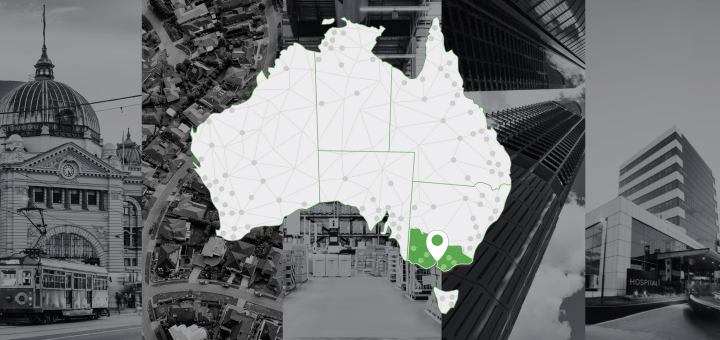.id recently published the 2023 NIEIR State of the Regions (SOR) dataset. This dataset is the country’s only economic and employment dataset that provides annual economic and employment information at the LGA level. It is essential for informed decision-making, especially during this crucial moment for the Australian economy.
The ongoing recovery from the COVID-19 pandemic has presented many challenges. Businesses struggling with recruitment challenges, households facing pressure on their savings, and a climate of global uncertainty make it more important than ever to have accurate and up-to-date data. In this blog, I examine some of the urban and regional economic trends we observed from our first look at the 2023 SOR dataset. At the end of the blog I will outline how you can access this data so that you can look at how these macro trends are playing out in your region of interest.
01 Australia’s economic recovery continues
The Australian economy grew by 3.7% in 2021-22, the fastest annual growth rate since pre-GFC (2007-08). The result reflects the strong recovery in the economy from the COVID-19 pandemic.
However, the recovery varied from region to region, as the economic impacts of the Delta outbreak, natural disasters, supply chain disruptions, and labor constraints affected areas differently.
02 Regional Australia outpaces metro areas
Regional Australia was the stand out, with its economy growing by 4.5% in 2021-22, well above the metropolitan and national average. This was Regional Australia’s fastest annual growth rate since 1997.
This strong performance is partly due to the Regional Australia’s population growing faster because of continued movement out of the capitals in the pandemic. This is explained in more detail in Glenn’s latest blog on population.
At an industry level, agriculture, information media and telecommunications, and administrative and support services were the drivers of Regional Australia’s economic growth in 2021-22
Strong agricultural production was helped by favourable weather conditions across Australia, while the growth in administrative and support services reflected the recovery in travel agent services and building cleaning and demand for employment services.
03 From prosperity to adversity: How COVID-19 is affecting our CBDs
CBDs have played a critical role in driving Australia’s economic growth over the past few decades. Their access to large labour force catchments, favourable planning rules and major infrastructure investment have made these areas highly attractive to knowledge workers. The scale of Melbourne and Sydney CBDs has enabled them to outperform their CBD peers, thanks to their large catchment of population and labour force talent.
The rise of Australia’s largest CBDs Melbourne and Sydney was then stalled by the COVID-19 pandemic. The strict lockdowns and social distancing measures put in place to control the spread of the virus led to a sharp decline in economic activity in both the Melbourne LGA and Sydney LGA.
For example, Sydney LGA’s retail, hospitality, and tourism sectors were hit particularly hard, with a significant drop in tourism visitation, workers, residents and revenue. As a result, spending that would typically occur in the Sydney CBD is now being redirected to the areas where CBD workers live.
04 Regional City economies have benefited from population growth and transition to services
Australia’s Major Regional Cities also experienced strong economic growth in 2021 and 2022, with Major Regional City GRP increasing by 4.5% in 2021-22 to be now almost 8% above the pre-COVID level in 2018-19. Many of the top 10 Major Regional Cities are located on the metropolitan periphery, such as Geelong, Sunshine Coast, and Ballarat.
05 Ongoing economic transition of Regional Cities
The economic transition of many Regional Cities, especially those on the metropolitan periphery, has been remarkable.
Take the City of Geelong for example. Historically, Geelong has been a manufacturing hub, with industries such as car manufacturing, textile production, and steel production playing a significant role in the city’s economy. However, with the decline of these industries, Geelong has had to diversify its economy and look for new opportunities for growth.
Geelong, like many other major regional cities, has experienced a significant shift in its economy, with the emergence of the health industry as a key driver of local economic growth. Over the last decade, the gross value added of Geelong’s health industry has doubled in size, while the manufacturing gross value added has declined by 16%. However, the city has also seen the emergence of new growth industries, such as Professional, Scientific, and Technical Services, which have been experiencing growth in engineering, architectural, and market research or statistical services in recent years. The drivers behind this transition appear to be due to Geelong’s connection to Greater Melbourne, relative housing affordability, talented migration and consistent public investment in infrastructure and institutions.
How to get access to the 2023 State of the Regions Dataset?
While this blog provides valuable insights into the urban and regional economic trends captured in the 2023 SOR dataset, it only scratches the surface of the economic stories that unfold in each region. These trends playout differently depending on the specific region, highlighting the need for high-quality, locally-sourced data to gain a comprehensive understanding of the economic landscape in each area. This is why we have developed a range of resources to help you understand the story in your region.
There are several ways to get access to the latest update. They are:
1) economy.id (online economic profile)
The information is available at the LGA and/or regional level through .id’s online economic platform, economy.id. See the latest 2023 State of the Regions Dataset in .id’s economic profiles.
2) Economic Health Check Report (consulting)
This is a value-added for clients that puts the State of the Regions Dataset in the hands of our economic experts. Our economic experts are engaged by councils and organisations across Australia to provide in-depth insights behind the data. Our experts draw on their knowledge of urban and regional economic development and years of experience working with decision makers across Australia. This information is used by councils to develop evidence based economic development strategies, investment attraction plans and support grant applications. Click here for more details.
3) State of the Regions Economic Indicators 2021 (Free)
Free economic comparisons of local government areas. The State of the Regions Economic Indicators is a set of headline economic measures for every Local Government Area (LGA) in Australia. The indicators provide a snapshot of each local economy at a point in time, showing how it contributes to the broader State economy and how it is performing in relation to other areas. Click here to get access to the State of the Regions Economic Indicators.
4) Contact us
To subscribe or arrange a demonstration at your council, please email economy@id.com.au.









